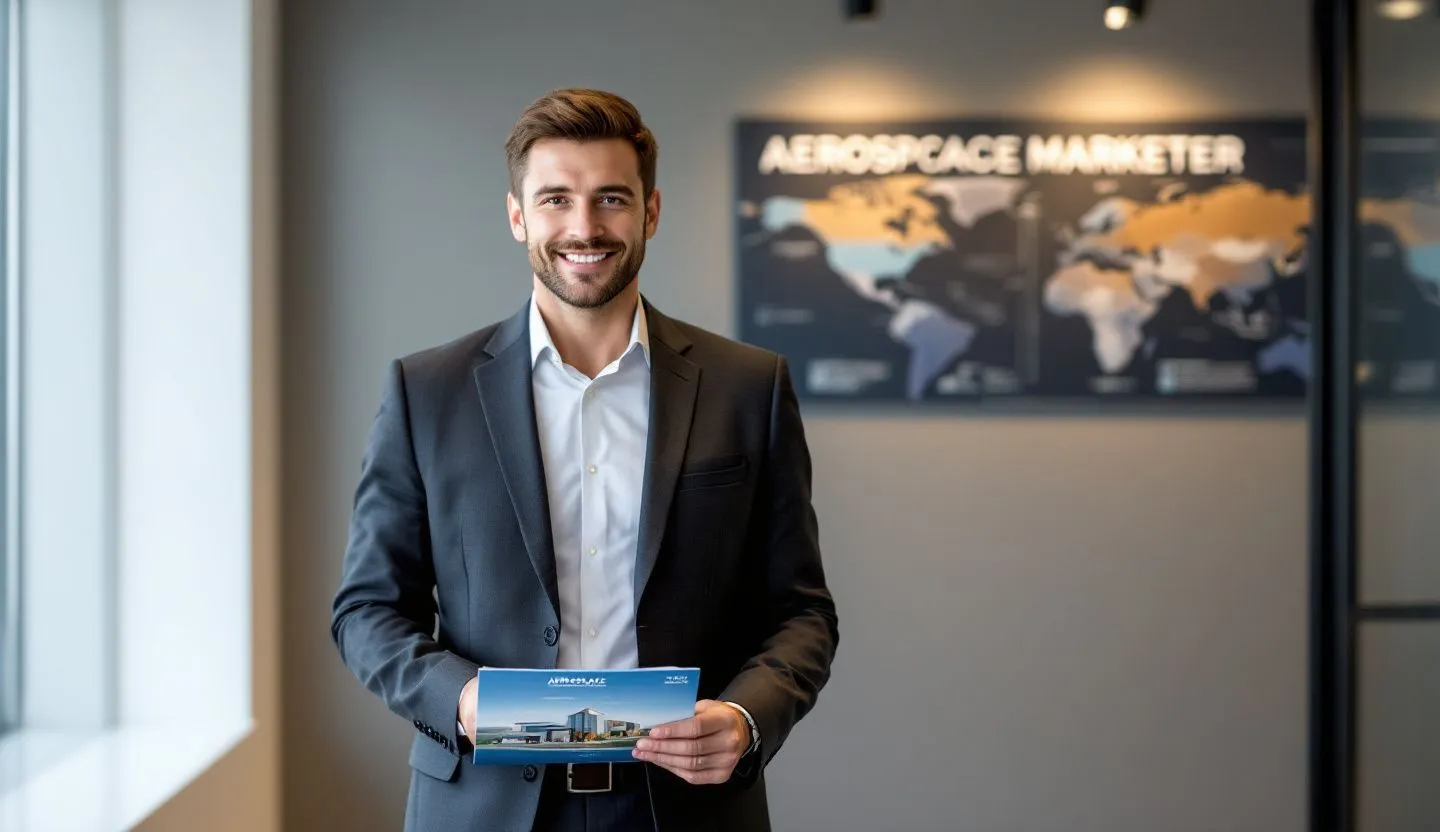Every enterprise marketing leader in aerospace knows the feeling: The product team in Toulouse needs a new campaign in French, the regulatory update from Seattle must be shared in Japanese and Mandarin, and your latest sustainability whitepaper needs to hit inboxes across EMEA,yesterday. Meanwhile, brand guidelines loom large, compliance teams hover, and every asset must look, sound, and feel like you,no matter the language, market, or format.
This is the tension we live with: move faster globally, but never slip on brand. Yet, scaling global translation in the aerospace industry often feels like an unsolvable puzzle. The stakes are sky-high (pun intended). Get it wrong, and you risk confusing partners, alienating buyers, or even running afoul of local aviation authorities. Get it right, and you unlock speed-to-market at a scale that transforms the way your brand shows up around the world.
Let’s talk about why this pain is more acute than ever, how the landscape is shifting, and what it takes to finally make Aerospace Global Translation a growth lever,not a bottleneck,for enterprise marketing.
The daily pressure of global aerospace marketing
If you’ve ever spent a late night coordinating last-minute translations for an airshow launch, or navigated endless rounds of approvals for a new technical brochure, you know the struggle isn’t just theoretical. The challenges are real, persistent, and deeply personal for those of us tasked with both speed and stewardship.

- The need for speed meets the complexity of compliance: We’re not just translating ad copy,we’re localizing technical documentation, safety procedures, regulatory notices, and high-stakes customer communications. Any delay or inconsistency here doesn’t just slow us down; it introduces risk.
- Brand consistency feels impossible at scale: With teams and partners scattered across continents, even small deviations in tone, terminology, or visual style can erode the brand equity we’ve built. I’ve seen beautifully crafted campaigns lose their punch,and credibility,after a round of “DIY” translation.
- Fragmented processes drain resources and morale: Too often, translation is a patchwork of agencies, freelancers, and internal reviewers, each with their own workflows and quality standards. The result? Bottlenecks, rework, and endless email chains. It’s no wonder content velocity stalls.
- The stakes are higher than ever: In aerospace, every piece of content is mission-critical, whether it’s a press release about a new aircraft, a safety compliance document, or a real estate brochure for a new facility. Inaccuracies or delays don’t just cost money,they can erode trust with partners, regulators, and customers alike.
Why global translation in aerospace is changing
What’s different now? Why does it feel like the pressure to scale translation and maintain brand consistency is suddenly at a fever pitch?
- The industry is more global and interconnected: We’re selling to, partnering with, and regulated by organizations in every corner of the globe. Even midsize aerospace brands now need to communicate in multiple languages across continents,often simultaneously.
- Content velocity is the new competitive edge: The old model of “translate, review, wait” can’t keep up with real-time market demands. Product launches, regulatory changes, and customer communications all happen on compressed timelines. If we’re not first,or at least fast,we’re invisible.
- Regulatory and compliance requirements are rising: From EASA (European Union Aviation Safety Agency) to the FAA (Federal Aviation Administration) to CAAC (Civil Aviation Administration of China), the patchwork of local compliance demands ever-more-precise language and documentation. Mistakes aren’t just embarrassing,they’re potentially costly or dangerous.
- Digital transformation is accelerating everything: As digital channels multiply, so does the volume and variety of content. Social posts, technical datasheets, video scripts, interactive demos,all need to be translated, localized, and distributed at scale. This requires a new kind of agility.
- Brand experience matters more than ever: In a world where buyers can compare options globally in seconds, every touchpoint must reinforce our value proposition and brand promise. Consistency isn’t just a “nice to have”,it’s essential to building trust and differentiation in a crowded market.
The pain of traditional aerospace translation models
Let’s be honest: The way most aerospace organizations handle translation today just isn’t built for the scale, speed, or complexity of our world. I’ve seen these pain points firsthand, and I’m guessing you have too.

- Siloed workflows slow everything down: Translation often happens outside core marketing and creative workflows. We hand off content to external agencies, wait for files to come back, then scramble to check for brand and compliance issues. Every handoff is a risk for errors or delays.
- Quality is inconsistent across languages and regions: Even with the best intentions, local teams or external vendors may not fully understand our brand voice, technical terminology, or compliance needs. The result is translation that “works” but doesn’t resonate,or worse, introduces errors.
- Visibility is limited, so mistakes slip through: When translation happens in disconnected systems, it’s hard to track changes, enforce brand guidelines, or ensure compliance. I’ve seen multiple versions of the same asset circulating in the wild, with subtle (or not-so-subtle) inconsistencies.
- Costs spiral out of control: Last-minute rush jobs, rework, and duplicated efforts add up,both in direct costs and in lost opportunities. And when translation isn’t scalable or repeatable, every new campaign becomes a fire drill.
The shift toward integrated, scalable translation
The good news: The world is changing, and so are our options. Enterprise marketing and brand leaders are moving beyond ad-hoc translation and embracing integrated, scalable solutions purpose-built for Aerospace Global Translation.
- Translation is moving inside core workflows: The days of “throw it over the wall” translation are fading. Modern teams integrate translation into their existing creative, compliance, and marketing tech stacks,so assets flow seamlessly from creation to localization to distribution.
- Brand guidelines are codified and enforced globally: Instead of relying on PDFs or tribal knowledge, best-in-class organizations use digital brand guidelines, glossaries, and translation memories. This makes it easier to ensure that every asset, in every language, feels unmistakably “us.”
- Technology is finally catching up to our needs: AI-powered translation, integrated review tools, and automated workflows mean we can move faster without sacrificing quality. We’re not replacing humans,we’re empowering them to focus on high-value work, like creative nuance and compliance review.
- Visibility and control are dramatically improved: Centralized dashboards, version control, and automated compliance checks give marketing, legal, and operations teams the transparency they need. No more guessing which version is correct or where assets are in the process.
How scalable aerospace global translation solutions work
So, what does this actually look like in practice? Let’s break down the key components of a scalable, enterprise-grade approach to Aerospace Global Translation.

- Centralized translation management: Instead of scattering projects across email threads and shared drives, everything lives in a single, secure platform. This means you can track progress, manage versions, and collaborate with internal teams and external vendors,all in one place.
- Integrated brand and compliance tools: Digital brand guidelines, approved glossaries, and compliance checklists are built into the workflow. As content moves through translation, the system flags deviations and enforces standards, so nothing goes out the door that shouldn’t.
- Automated workflows that scale: Routine tasks,like routing assets for review, applying translation memories, or pushing finished content to regional teams,are handled automatically. This frees up your team to focus on strategy and creative, not busywork.
- Collaboration across teams and geographies: Marketing, compliance, legal, and IT teams all have visibility and input where needed. Integrated commenting, version control, and access management mean everyone is in the loop, without endless back-and-forth.
- Security and data privacy at the core: Especially in aerospace, where IP and compliance are paramount, enterprise-grade translation platforms offer robust security, audit trails, and role-based permissions. This keeps sensitive content safe and ensures regulatory compliance.
Real-world examples from the aerospace industry
Let’s ground this in reality. Here are a few scenarios where scalable Aerospace Global Translation has made a real impact for enterprise teams like ours.
- Global product launches that don’t miss a beat: One multinational aerospace supplier used to spend weeks preparing multilingual launch materials for every new aircraft system. By integrating translation into their creative workflow and using approved glossaries, they now launch in six languages simultaneously,without last-minute scrambles or brand missteps.
- Regulatory updates delivered at the speed of change: When EASA and FAA regulations changed on lithium-ion battery transport, a leading aerospace OEM needed to update technical documentation and training materials in 10 languages, fast. With a centralized translation platform and automated compliance checks, they distributed accurate, on-brand updates in days,not weeks.
- Consistent partner communications, everywhere: A global aerospace real estate division struggled with inconsistent messaging and branding across EMEA and APAC partner networks. By implementing a digital brand hub and translation memory, they empowered regional teams to adapt content quickly,while ensuring every asset stayed true to the master brand.
- Crisis communications without chaos: During a recent safety incident, a commercial aviation company needed to issue urgent multilingual updates to customers and regulators across three continents. Because their translation workflows were already integrated and scalable, they delivered coordinated, compliant messages in hours,maintaining trust and avoiding regulatory missteps.
The role of brand governance in scalable translation
Brand consistency isn’t just about logos and colors. In aerospace, it’s about ensuring that every message, in every language, reflects our expertise, reliability, and attention to detail. That’s where brand governance comes into play.

- Building translation into brand guidelines: The best organizations don’t treat translation as an afterthought. They define brand voice, key messages, and technical terminology up front,in every target language. This makes it easier for translators and regional teams to deliver assets that feel authentic and on-brand.
- Training and empowering local teams: Local marketers, compliance officers, and partners need more than a PDF,they need tools, training, and support to adapt content effectively. Scalable solutions provide self-serve access to assets, brand guidance, and review workflows, so everyone is set up for success.
- Measuring and enforcing consistency: It’s not enough to hope for consistency; we need to measure it. Centralized translation platforms allow for ongoing quality checks, feedback loops, and reporting. Over time, this drives continuous improvement and helps protect brand equity globally.
Balancing velocity and control: Lessons learned
After years of managing content at scale, I’ve learned that the tension between speed and control is real,but not insurmountable. Here’s what works (and what doesn’t) when scaling Aerospace Global Translation without losing your brand’s soul.
- Don’t sacrifice quality for speed: It’s tempting to push assets out quickly and hope for the best, but shortcuts almost always backfire. Invest in building robust translation memories, glossaries, and digital brand guidelines up front. This pays dividends in both speed and consistency.
- Integrate, don’t bolt on: Translation shouldn’t be a separate process or afterthought. The more you can integrate localization into your existing creative, compliance, and distribution workflows, the smoother everything runs. Look for platforms that connect with your DAM, CMS, and creative tools.
- Empower teams, but keep a single source of truth: Local teams need flexibility to adapt content for their markets, but there must be clear guardrails and oversight. Centralized platforms, access controls, and real-time reporting help strike the right balance.
- Automate where it adds value: Use automation to handle repetitive tasks,like routing, versioning, or initial quality checks,so your people can focus on higher-value work. But always leave room for human review, especially for high-stakes or nuanced content.
- Build feedback loops for continuous improvement: The best translation programs aren’t static. Collect feedback from local teams, partners, and end users. Use this data to refine glossaries, workflows, and training over time.
The technology stack powering aerospace global translation
For marketing, brand, and IT leaders, the right technology stack makes all the difference in scaling translation without losing control. Here’s what to look for when evaluating solutions.
- Translation management systems (TMS): A modern TMS centralizes all translation projects, assets, and workflows. Look for solutions that support real-time collaboration, version control, and integration with your creative and compliance tools.
- Digital asset management (DAM): Your DAM should serve as the single source of truth for all brand assets,logos, templates, imagery, approved translations. Seamless integration with your TMS ensures teams always use the latest, approved content.
- Brand governance platforms: These tools codify your brand guidelines, terminology, and compliance requirements. The best solutions make it easy for both internal and external teams to access, use, and adapt content without sacrificing consistency.
- Automated compliance and quality assurance: Integrated compliance tools flag potential issues,like missing disclaimers, unauthorized terminology, or regulatory gaps,before assets go live. Automated QA saves time and reduces risk.
- Secure, enterprise-grade infrastructure: Especially in aerospace, security and data privacy are non-negotiable. Look for solutions with robust encryption, audit trails, role-based access, and compliance with industry standards (like ISO 27001).
The human element: Building a culture of global brand stewardship
Technology is critical, but it’s people who ultimately make or break your global brand. Scaling Aerospace Global Translation requires a culture where everyone,marketers, compliance teams, partners, and translators,feels empowered and accountable.
- Foster cross-functional collaboration: Break down silos between marketing, legal, IT, and local teams. Regular check-ins, shared goals, and transparent processes help everyone pull in the same direction.
- Invest in training and support: Provide ongoing education on brand guidelines, translation best practices, and compliance requirements. Make it easy for teams to get help when they need it.
- Celebrate local success stories: Highlight examples where local teams have adapted content brilliantly,while staying true to the brand. This reinforces the value of good process and builds pride in global brand stewardship.
- Listen and adapt: Encourage feedback from all corners of the organization. What’s working? Where are teams struggling? Use this input to refine workflows, tools, and training.
The outcomes of getting it right
When you scale Aerospace Global Translation the right way, the results are transformative,for both your brand and your business.
- Content velocity becomes a true competitive edge: Campaigns, product launches, and regulatory updates move at the speed of the market, not the speed of email threads or manual reviews.
- Brand consistency is protected, everywhere: Every asset,whether it’s a technical datasheet in German or a recruitment video in Mandarin,reflects your brand’s unique voice and values.
- Compliance risk is minimized: Automated checks and integrated workflows mean nothing slips through the cracks. Regulatory, legal, and brand requirements are met, every time.
- Teams are empowered and engaged: Marketers, compliance officers, and partners spend less time on admin and more time on strategy, creativity, and building relationships.
- Global growth is unlocked: With scalable, repeatable processes in place, your brand is ready to seize new markets, adapt to change, and deliver world-class experiences,everywhere you operate.
Scaling Aerospace Global Translation isn’t just about ticking boxes or speeding up asset delivery,it’s about future-proofing your brand for a world that moves faster and expects more. For those of us leading enterprise marketing, brand, and compliance in aerospace, the pain points are deeply familiar: delays, inconsistencies, compliance headaches, and the perpetual tension between velocity and control. But as the industry evolves, the opportunity is equally real. By integrating translation into our core workflows, investing in the right technology stack, and building a culture of global brand stewardship, wecan finally reconcile speed with consistency and compliance.
The payoff? Our teams move with confidence and agility, our brand stands out in every language, and we’re equipped to navigate the ever-shifting demands of global aerospace marketing. Content velocity becomes a competitive advantage, not a liability. Brand consistency is protected, not compromised. And as we scale, we do so not with chaos, but with clarity and control. The future of Aerospace Global Translation isn’t just scalable,it’s strategic, secure, and undeniably human.







